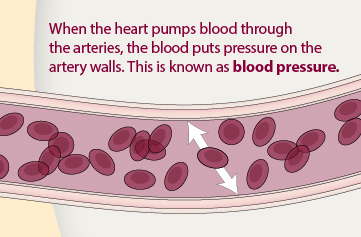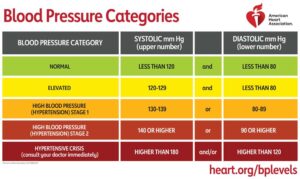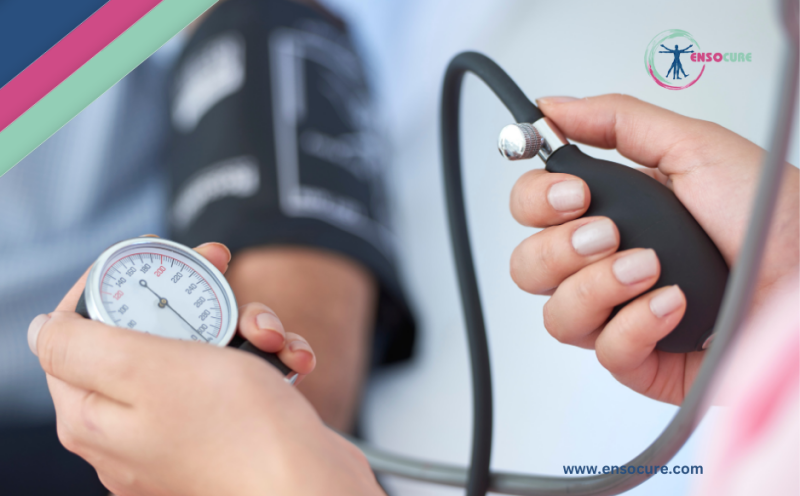Not everyone can understand blood pressure, and even more so, what should be your ideal blood pressure. What do you mean by systolic blood pressure, what is diastolic blood pressure, well, you’re going to find all the answers here. Blood pressure is a critical indicator of cardiovascular health and plays a pivotal role in maintaining overall well-being. Understanding blood pressure, learning how to read it accurately, and recognizing healthy levels are essential steps toward keeping yourself in good health.
What is Blood Pressure?

Your heart supplies the organs and tissues of the body with blood by pumping it into large blood vessels through the circulatory system. Blood moving through the body exerts pressure on the walls of these blood vessels or arteries. Thus, blood pressure is the force exerted by blood against the walls of arteries as it circulates through the body. It is typically measured in millimeters of mercury (mmHg) and expressed as two values: systolic and diastolic.
- SYSTOLIC BLOOD PRESSURE: Systolic blood pressure is the first major number in a blood pressure reading considered usually the top or higher number. It indicates how much pressure your blood is exerting against your artery walls when the heart contracts pumping oxygen-rich blood into the blood vessels.
- DIASTOLIC BLOOD PRESSURE: Diastolic blood pressure, the second or lower number indicates how much pressure your blood is exerting against your artery walls while the heart muscle is resting between contractions. The diastolic pressure is always lower than the systolic pressure.
Usually, doctors focus more on systolic blood pressure as a marker to diagnose hypertension (high blood pressure), low blood pressure (hypotension), and cardiac disease. In most people, systolic blood pressure increases with age because of stiffened arteries, and plaque which increase the risk of cardiac and vascular disease. Sometimes, both, an elevated systolic or an elevated diastolic blood pressure reading may be used to diagnose high blood pressure.
Read All About Hypertension Here: Understanding Hypertension: Causes, Signs, Risks, And Treatment
Understanding The Numbers
Blood pressure readings are always given in pairs, with the upper (systolic) value first, followed by the lower (diastolic) value. This means if your blood pressure is 110/75 mmHg (often spoken “110 over 75”), you have a systolic blood pressure of 110 mmHg, and a diastolic blood pressure of 75 mmHg.
Interpreting Blood Pressure Readings

Understanding blood pressure numbers is not difficult. According to the American Heart Association, a normal blood pressure reading is often represented as 120/80 mmHg, where 120 is the systolic pressure, and 80 is the diastolic pressure. Elevated numbers indicate increased stress on the arteries, heart, and other organs.
Normal: Systolic < 120 mmHg and Diastolic < 80 mmHg
Elevated: Systolic 120-129 mmHg and Diastolic < 80 mmHg
Hypertension Stage 1: Systolic 130-139 mmHg or Diastolic 80-89 mmHg
Hypertension Stage 2: Systolic ≥ 140 mmHg or Diastolic ≥ 90 mmHg
Hypotension: Low Blood Pressure or Hypotension is marked by a reading lower than 90/60 mm Hg
The Importance of Maintaining Healthy Blood Pressure
Heart Health
Optimal blood pressure promotes cardiovascular health, reducing the risk of heart disease, heart attacks, and strokes. High blood pressure strains the heart, and can damage your arteries by making them less elastic. This reduces blood flow reducing oxygen to the heart which in turn leads to chest pain or angina and heart disease.
Kidney Function
Hypertension is a significant risk factor for chronic kidney disease (CKD). Long-term, uncontrolled high blood pressure can damage the small blood vessels in the kidneys and impair their ability to filter blood effectively. Unmanaged high blood pressure can eventually lead to hypertensive nephropathy or kidney damage caused by long-term high blood pressure. It is a leading cause of end-stage renal disease (ESRD) and may necessitate dialysis or kidney transplantation.
Brain Function
There is a definite connection between the blood pressure and the brain. Elevated blood pressure is a significant risk factor for cognitive decline and dementia. Proper blood flow to the brain ensures optimal cognitive function and reduces the likelihood of conditions such as Alzheimer’s disease.
Factors Affecting BP
- Lifestyle Choices: Diet rich in sodium, saturated fats, and cholesterol can contribute to high blood pressure. Lack of physical activity and sedentary lifestyles are linked to elevated blood pressure.
- Genetics: Family history plays a role in determining susceptibility to high blood pressure. Understanding genetic predispositions allows for proactive measures to maintain healthy blood pressure levels.
- Age and Gender: Blood pressure tends to increase with age due to changes in artery stiffness. Men are generally more prone to high blood pressure until women reach menopause.
How to Measure Your Blood Pressure
Taking your blood pressure at home is easy because of the variety of sophisticated electronic devices that can help you read blood pressure. Moreover, blood pressure needs to be taken more than once due to it fluctuating during the day. There are several things that can affect and cause spikes in blood pressure such as exercise, food, medication, stress, pain and even temperature. However, these are natural factors where your blood pressure soon returns to normal.
Remember, if your blood pressure is high after just one reading, it doesn’t necessarily mean you have hypertension. To get an accurate reading, you need to measure your blood pressure on different days while in a resting state such as relaxing on a chair. The arm used for measurement should rest on a table, at about the same height as the heart, while the reading is being done.
Why you should wait 10 minutes before taking your blood pressure at the doctor’s office.
Moreover, a reading taken at the doctor’s office may not be accurate too. There is a valid condition called “White Coat Hypertension” which raises people’s blood pressure because of nervousness after visiting the doctor’s office. Besides being nervous, there is also the factor of travelling to the doctor’s office too. If your doctor takes your blood pressure as soon as you reach there, it’s still going to be high. You should request your doctor to wait at least 10 minutes till you are in a resting state to get an accurate reading of your blood pressure.
Here’s Where to Understand Your Blood Pressure Better
Check out this website, BloodpressureOK.com, It has a good blood pressure reader to interpret your BP readings and tell you what to make of it. Follow the image to find out normal blood pressure by age. That being said, a BP in the range of 105-120 systolic, and 60-80 diastolic is cool.
Understanding blood pressure, learning how to read it accurately, and maintaining healthy levels are integral aspects of productive healthcare. By adopting a healthy lifestyle, making informed choices, and monitoring blood pressure regularly, individuals can significantly reduce their risk of cardiovascular issues and enhance overall well-being.

